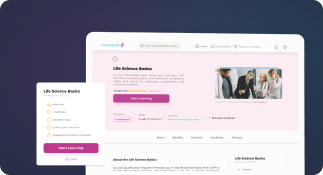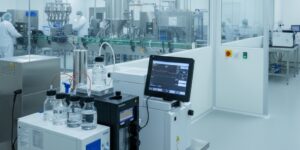Environmental Monitoring (EM)
Definition
Environmental Monitoring (EM) refers to the systematic, ongoing process of measuring, evaluating, and documenting the levels of microbial and particulate contamination in controlled environments, such as cleanrooms used in pharmaceutical and biotechnology manufacturing. The purpose of EM is to ensure that these environments meet regulatory requirements and remain within acceptable contamination limits for the production of sterile and non-sterile products.
Detailed Explanation
Environmental Monitoring (EM) is a cornerstone of Good Manufacturing Practice (GMP) in the pharmaceutical and life sciences industries. It provides critical data to assess the effectiveness of contamination control strategies and is essential for maintaining product quality and patient safety.
Purpose and Importance
An effective EM Program ensures that cleanrooms and controlled environments remain within validated cleanliness classifications, such as ISO 14644 or EU GMP Annex 1 standards. Monitoring is designed to detect deviations or trends that could indicate a loss of environmental control, allowing for timely corrective and preventive actions (CAPA).
Components of an EM Program
A comprehensive Environmental Monitoring Program includes the following components:
- Viable Monitoring: Detects microbial contamination (e.g., bacteria, fungi) using methods such as settle plates, contact plates, swabs, and active air samplers.
- Non-viable Monitoring: Measures particulate matter using particle counters to assess airborne cleanliness.
- Surface Monitoring: Evaluates contamination on equipment, walls, and floors using contact plates or swabs.
- Personnel Monitoring: Assesses contamination from operators by sampling gloves, gowns, or other apparel.
Cleanroom Control and Classification
Cleanrooms are classified based on the maximum allowable levels of airborne particles, as defined in ISO 14644-1 and EU GMP Annex 1. Environmental Monitoring ensures compliance with these classifications through routine and event-driven sampling.
Examples of cleanroom classifications include:
- ISO Class 5 (Grade A): Typically used for high-risk operations like aseptic filling.
- ISO Class 7 (Grade C): Used for less critical operations like preparation of components.
Monitoring Frequency and Locations
The frequency and location of sampling are based on a risk assessment and should cover critical and non-critical areas. For example:
- Daily monitoring in Grade A/B areas during operations.
- Weekly or monthly monitoring in Grade C/D areas.
- Sampling during dynamic conditions (i.e., during manufacturing) for accurate assessment.
Regulatory Expectations
Regulatory agencies such as the FDA, EMA, and WHO require robust EM Programs as part of GMP compliance. Documentation of EM data, trend analysis, and investigation of excursions are essential to demonstrate control over the manufacturing environment.
Key regulatory references include:
- FDA Guidance for Industry: Sterile Drug Products Produced by Aseptic Processing
- EU GMP Annex 1: Manufacture of Sterile Medicinal Products
- ISO 14644-1: Cleanrooms and Associated Controlled Environments
Examples in Practice
In a pharmaceutical manufacturing facility producing sterile injectables, EM includes continuous particle monitoring in ISO 5 areas during aseptic filling. Additionally, active air and surface sampling may be performed at the start and end of shifts to detect potential microbial contamination. Any detection of microorganisms above action limits triggers an investigation, root cause analysis, and corrective actions.
Trends and Reporting
Trend analysis is a critical part of an EM Program. It involves reviewing historical data to identify patterns or gradual increases in contamination levels. Trending helps in proactive decision-making and continuous improvement of contamination control strategies.



